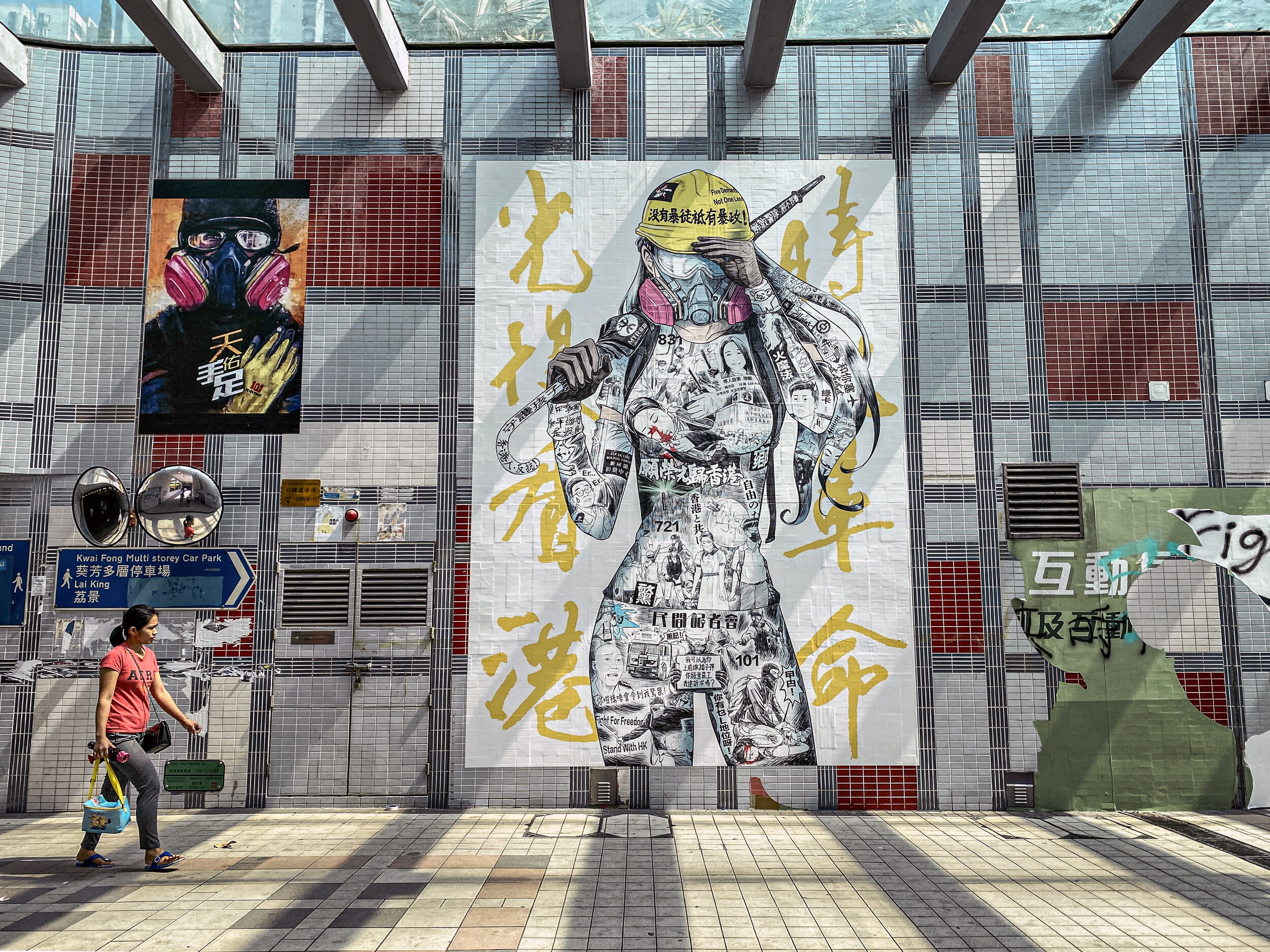OPINION: The Art of Protests
In Hong Kong’s public spaces, “Lennon walls” have become popular places to share art and messages of protest. (Flickr)
The haze of tear gas, black and bloody flags, candy-colored squares: these are the images of Hong Kong. In news reports about the protests, photographs and video footage of the intense clashes between police and protesters dominate. Documenting these violent confrontations, while undeniably important, is not the only way in which protesters have proven the power of pictures.
By creating viral art, the local creative community has made a vital contribution to the protests. A university student who goes by “Y” redesigned Hong Kong’s red flag in black and gave its central orchid withered, bloodstained petals—a symbol of the city’s wilting freedoms. Protesters flew the flag outside the Legislative Council as officials celebrated the anniversary of Britain’s handover of Hong Kong to China, according to South China Morning Post; the flag design also swept across social media and into street rallies, Hong Kong Free Press reports.
Y is part of a secret online network of more than 200 artists who share pop culture parodies, educational infographics, and biting caricatures of pro-China officials on “Lennon walls” of colorful sticky notes, as well as through social media and Apple’s AirDrop feature. The collective’s work is the latest contribution to a long-standing tradition of art and iconography in protest of the Chinese Communist Party.
Likely the most widely known such artistic activist, Ai Weiwei has been active since the 1980s. He condemned government negligence for worsening the devastation of the 2008 Sichuan earthquake and commemorated the students who died through an art installation featuring thousands of children’s backpacks.
In 2011, moreover, Ai reimagined a popular homophonic meme for “harmonization,” or censorship, through a display of thousands of porcelain river crabs in the CCP’s colors. Ai’s 81-day detainment and the demolition of his Shanghai studio in 2011, as well as the government harassment and surveillance he has faced, are vivid, if extreme, illustrations of how protest art poses a real threat to the CCP’s authority.
With “China’s Banksy,” Badiucao, also pressured into canceling his Hong Kong show in 2018 after receiving threats, it is clear that the CCP is going after not only those protesting on the streets but also the artists who are key to imbuing the movement with spirit and solidarity.

